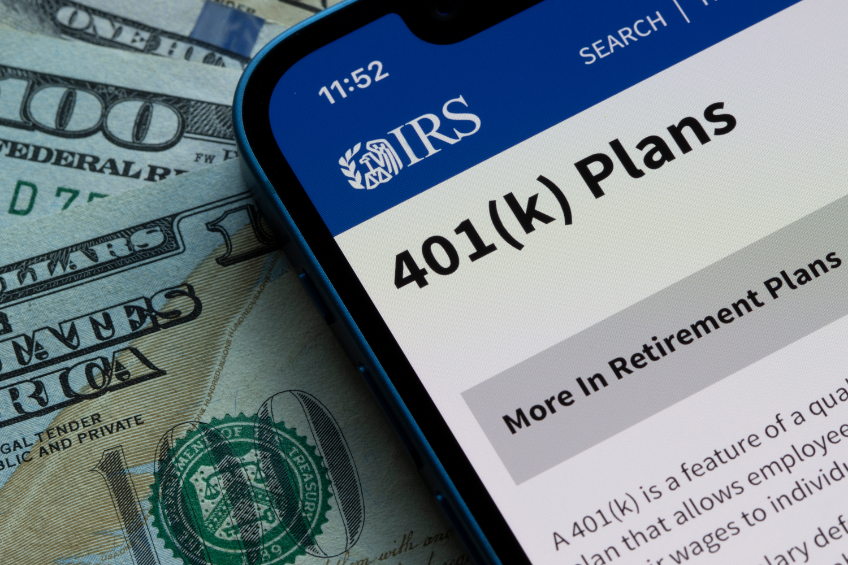
What Are the Maximum Contribution Limits for a 401k?
Here’s a round-up of the 401K tax deductions!
A 401k retirement plan is an employer-sponsored investment account that provides numerous tax benefits to its participants. Contributions to a 401k plan are typically made with pre-tax dollars, which lower a participant’s taxable income in the year of contribution while allowing the contributions to grow tax-free until they are withdrawn. Employers, in turn, can offer incentives to contribute, such as matching contributions that match a portion of the employee’s annual contribution. There are pre-set limits on the amount of contributions that san employee can make annually. In this section, we will discuss the maximum contribution limits for a 401k plan and further explore the tax benefits, employer contributions, and matching requirements associated with the plan.
Employee Pre-Tax Contributions
Employee pre-tax contributions are a key feature of 401k plans that allow participants to save for retirement by contributing a portion of their salary to the plan with pre-tax dollars. By doing so, employees can reduce their taxable income and potentially save money on their income taxes.
When an employee chooses to make pre-tax contributions to their 401k plan, the contribution is not included in their taxable income for the year. This means that the employee’s taxable income is reduced by the amount of their contribution, potentially resulting in a lower tax bill.
The maximum amount of an employee’s compensation that can be taken into account when figuring contributions is $305,000 for the year 2023, which is adjusted annually for inflation. This means that employees can contribute up to this amount to their 401k plan with pre-tax dollars, reducing their taxable income by a significant amount.
Pre-tax contributions can result in tax savings for employees because the money is not subject to income taxes until it is withdrawn from the plan, usually in retirement. At that point, the employee will pay taxes on the contributions and any earnings that the contributions have generated over time. However, it is important to note that there are limitations and restrictions on pre-tax contributions, such as penalties for early withdrawals and minimum distribution requirements.
In summary, pre-tax contributions are a valuable feature of 401k plans that allow employees to save for retirement while potentially reducing their overall taxable income. The maximum compensation limit for pre-tax contributions should be considered when determining contribution amounts, and employees should be aware of the potential tax benefits and limitations associated with these types of contributions.
Annual Contribution Limit
The Annual Contribution Limit is the maximum amount of money that an individual can contribute to their 401k plan each year. This number can vary from year to year, and it is essential to pay close attention to this limit when planning for retirement. The annual contribution limit is set forth by the Internal Revenue Service (IRS) and is adjusted annually for inflation.
For 2023, the limit is $20,500, but this amount can change from year to year. It is crucial to note that eligible contribution amounts can vary depending on an individual’s age, and there is also a catch-up contribution limit for those over the age of 50. For 2023, individuals over the age of 50 can contribute an additional $6,500 to their 401k plan, bringing their total maximum contribution to $27,000.
Exceeding the annual contribution limit can result in significant consequences. Contributions made over and above the limit are subject to taxation, and individuals may be required to pay additional penalty fees as well. These fees can quickly add up and significantly impact an individual’s retirement savings potential.
It is vital to note that the annual contribution limit is not a goal to be reached but rather a maximum threshold that should not be exceeded. It is advisable to contribute as much as possible to a 401k plan to maximize retirement savings potential, but not to exceed the annual limit.
Additionally, it is essential to monitor any potential changes to the annual contribution limit. Economic factors and government policies can impact the limit, resulting in the need to adjust retirement savings plans accordingly. However, the limit can also increase, which presents opportunities for increased retirement savings.
Withdrawal Rules for 401ks
When it comes to 401k plans, certain withdrawal rules must be followed to avoid penalties and maximize the potential benefits of the retirement savings plan. Early Withdrawal Penalties can incur steep fees and tax consequences, but some individuals may qualify for Penalty Exemptions for Early Withdrawals. Required Minimum Distributions (RMDs) must also be taken at age 70.5 or 72, depending on birth year, to avoid significant tax penalties. And, for those looking to take distributions in one lump sum or over a set period of time, Lump-Sum Distributions and Periodic Distributions must be managed carefully to avoid unintended tax consequences.
Required Minimum Distributions (RMDs)
Required Minimum Distributions (RMDs) are an essential aspect of managing your 401k plan as an individual investor. Starting at a specific age, you must take out a minimum amount from your retirement accounts, including 401k plans, Traditional IRAs, and other tax-advantaged accounts. Here are some important details on RMDs that you should know:
Age Requirements:
The age at which you are required to take RMDs is 72 if you were born on July 1, 1949, or later. However, if you were born before June 30, 1949, you must start taking RMDs from the year you turn 70 1/2.
Distribution Calculations:
Calculating your RMDs is an important step in managing your retirement funds. To determine the distribution amount, you must divide the account balance at the end of the prior year by the applicable distribution period determined by the IRS. The distribution period is based on the individual’s life expectancy or the joint life expectancies of the individual and their beneficiary.
Deadlines:
It’s essential to meet the deadlines for taking RMDs to avoid penalties. Generally, the deadline for taking RMDs is December 31st of each year. However, the first RMD may be delayed until April 1st following the calendar year in which the individual turns 72 (or 70 1/2 for those born before June 30, 1949).
Exemptions and Special Circumstances:
In some instances, exemptions or special circumstances may apply to RMDs. For example, if you are still working, and your employer’s plan allows it, you may be exempt from taking RMDs from that employer’s 401k plan until you retire. Moreover, if you inherited a 401k or IRA account, different RMD rules and calculations may apply.
Participant Death:
It’s important to know how RMDs are handled in the event of the participant’s death. If the 401k account owner dies before they have taken their RMD, the beneficiary must take the amount that the participant had to withdraw, otherwise, they may be subject to penalties.
In conclusion, RMDs are an essential aspect of managing your 401k plan. Understanding the rules and requirements, age requirements, distribution calculation, and deadlines are crucial to avoid unnecessary penalties and maximize your retirement savings. By being informed of any exemptions or special circumstances that may apply, you can optimize your retirement planning while ensuring the smooth transfer of your assets to your beneficiaries in case of death.
Lump-Sum Distributions and Periodic Distributions
When it comes to distributing funds from your 401k plan, you have two primary options: lump-sum distributions or periodic distributions. The main difference between the two is how the distribution is made.
A lump-sum distribution involves the distribution of the entire account balance in one go. This can be useful for those who need access to a large sum of money all at once. On the other hand, periodic distributions involve distributing the account balance over a period of time. This can be helpful for those who want a steady stream of income throughout retirement.
It’s important to note that participants have the choice between these two options, and it’s essential to carefully consider which one is best for their specific situation before making a decision. In addition, early withdrawal penalties may come into play if the account is liquidated prematurely. Therefore, it’s advisable to seek professional guidance from a tax professional, financial advisor, or plan administrator before proceeding with either option.
Tax Treatment of 401k Withdrawals
When withdrawing funds from a 401k plan, it’s important to understand the tax implications and the potential penalties associated with early withdrawals. The amount of money that is withdrawn from the 401k plan will be subject to income tax, which means that withdrawing a large sum of money at one time could significantly increase your taxable income and potentially even push you into a higher tax bracket. In addition, the plan administrator is required to withhold federal income tax from any distribution, and this amount may not be enough to cover the full tax liability, resulting in the need to pay additional taxes when filing the annual tax return.
Taxable Distribution Amounts
When you withdraw money from your 401k plan, the amount of tax you owe will depend on the type of distribution you take. A taxable distribution occurs when you withdraw money from your traditional 401k account or an employer-sponsored plan. This is because traditional 401k contributions are made with pre-tax dollars, and the earnings on those contributions are also tax-deferred, which means the money is taxed as ordinary income when it is withdrawn.
On the other hand, if you have a Roth 401k account or make contributions to a Roth IRA, your contributions are made with after-tax dollars. As a result, Roth contributions and earnings can be withdrawn tax-free as long as you meet certain qualifications, including reaching age 59 ½ or older and having the account open for at least five years. Keep in mind that if you take a distribution before meeting these requirements, you may owe income tax as well as a 10% additional tax, unless an exception applies.
Exceptions to the 10% additional tax on early distributions include distributions taken due to disability or death, distributions made as part of a series of substantially equal payments, distributions made to cover certain medical expenses, or distributions made to cover qualified higher education expenses.
In addition to contributing to a tax-advantaged retirement account like a 401k or IRA, there are other options available to reduce your taxable income. Making contributions to a Health Savings Account (HSA) or Flexible Spending Account (FSA) can also provide tax benefits. You may also be able to take advantage of tax deductions for things like charitable donations, mortgage interest, or property taxes.

Jessie Seaman
Jessie Seaman, Esq. & EA, is a Florida attorney and IRS Enrolled Agent with over 12 years of experience in state and federal tax controversy resolution. Passionate about helping individuals and businesses navigate complex tax challenges, Jessie combines her legal expertise with a dedication to education, often mentoring future tax professionals and speaking at national conferences. A double major graduate from the University of South Florida and a Juris Doctor recipient from Florida Coastal School of Law, she has overseen tens of thousands of tax resolution cases, from simple privacy plans to high-profile matters. Jessie currently resides in Chicago, enjoying outdoor adventures with her Pomsky, Fisher.







